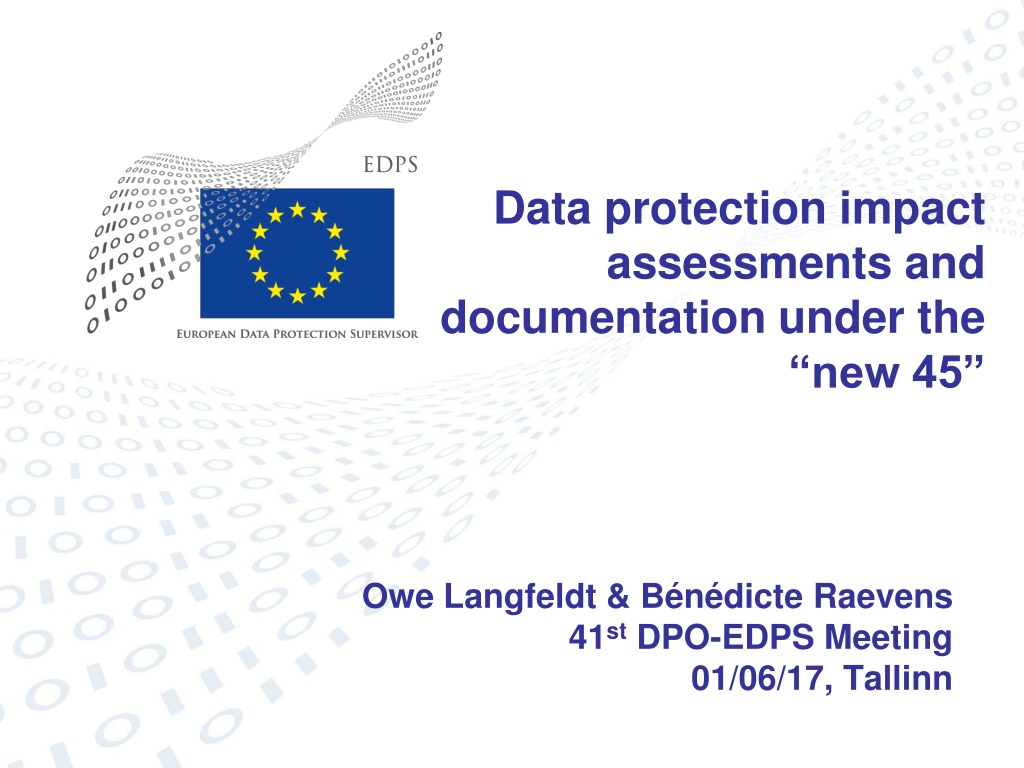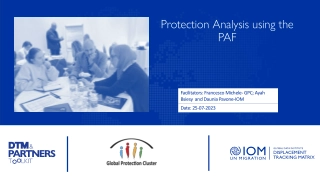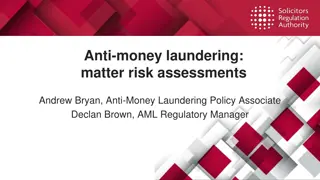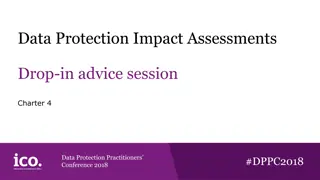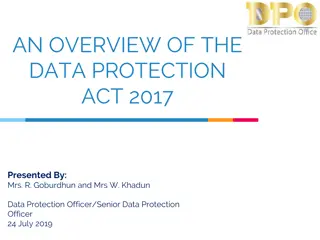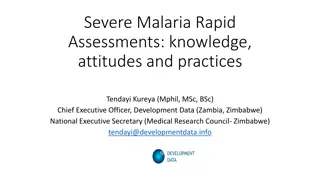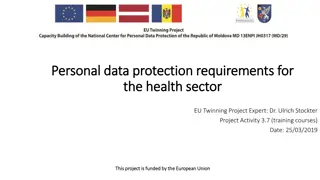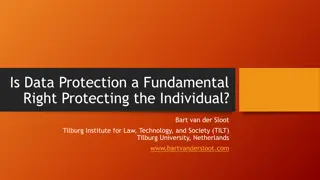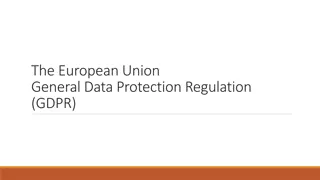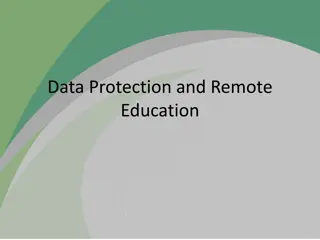Understanding Data Protection Impact Assessments and Documentation
Explore the importance of Data Protection Impact Assessments (DPIA) and documentation under the new regulations. Learn about conducting DPIAs, when to perform them, examples of high-risk processing operations, and the documentation requirements. Gain insights into threshold assessments, DPIA reports, compliance checks, and prior consultation processes. Discover case studies and practical guidance on handling data protection risks effectively.
Download Presentation

Please find below an Image/Link to download the presentation.
The content on the website is provided AS IS for your information and personal use only. It may not be sold, licensed, or shared on other websites without obtaining consent from the author. Download presentation by click this link. If you encounter any issues during the download, it is possible that the publisher has removed the file from their server.
E N D
Presentation Transcript
Data protection impact assessments and documentation under the new 45 Owe Langfeldt & B n dicte Raevens 41stDPO-EDPS Meeting 01/06/17, Tallinn
Agenda Introduction: Architecture of DP documentation under new 45 When to do a DPIA? Case study: threshold assessments How to do a DPIA & when to go for prior consultation? Transition rules Summary Q&A 2
Documentation Overview high residual risk? DPIA Description Compliance check Initial risk assessment DPIA report Improvement plan Supporting documentation Detailed description Detailed risk assessment Controls chosen Records and Documentation Prior consultation List or threshold assessment 3
Extent of documentation Documentation requirements scale to the risks small on small things, big on big things; Most processing operations will only require a record. Prior Consultation DPIA Record 4
When to do a DPIA? Article 39 new 45 high risk specific risk in old 45 Examples for what in particular is high risk , but no exhaustive catalogue EDPS has to issue a list of kinds of processing operations requiring DPIA (39(4)). That list will be non-exhaustive! EDPS may issue a list of kinds of processing operations prima facie not requiring DPIA (39(5)) Lists & Threshold Assessment If it s on the 39(4) list, do a DPIA; If not, but still appears risky, perform a threshold assessment. Operationalising high risk : WP29 approach is list of derived indicators from text and recitals of GDPR; we ll base ourselves on that 5
Threshold Assessments WP29 approach: derived list of indicators Evaluation/scoring Automated decision-making with legal or similar significant effect Systematic monitoring Special categories of data Large-scale processing Matching/combining datasets against reasonable expectations Vulnerable data subjects New technology / innovative solutions Transfer outside the EU Processing preventing DS from exercising a right / using a service Rule of thumb: two boxes ticked means doing a DPIA. If need for DPIA is confirmed, threshold assessment and record already provide a starting point. 6
Case Studies (25 min) Three small stories on your hand-outs: Breaking encryption Staff evaluation High-tech CCTV Using the templates provided in your hand-outs, think about whether this would require a DPIA Look left, right, ahead and behind talk to your neighbours! 7
Feedback threshold assessment Breaking encryption points 3, 8, 9 DPIA necessary Staff appraisal 1? 7? no DPIA necessary High-tech CCTV 3, 8 DPIA necessary (for some parts) Does the form work for you? Would it work for controllers? 8
How to do a DPIA? No methodology imposed, any methodology that complies with requirements can be used EDPS will provide a template Description, risks and controls What do we want to do? How could it affect people? How do we minimise this impact while still fulfilling the task at hand? Risks to whom? in the first place, to people affected but also compliance risks for your organisation 9
How to do a DPIA? Description based on record, but extended detailed data flow diagram Risk assessment to DS and compliance aspects guiding questions per DP principle walk through data flow diagram Choice of controls based on compliance requirements and risks identified 10
When to go for prior consultation? ...when not sure if risks are properly mitigated Documentation to send: record & DPIA report, treatment plan, ISRM docs EDPS will provide recommendations. But: Article 40(4) there may be implementing acts in the future requiring prior consultation for specific things Records of processing (for all) DPIA ("high risk") PC ("high residual risk") 11
Transition rules Art. 25 notifications can serve as a basis for records; review where necessary; 2 years transition; Art. 27 cases: new ex-post: no longer accepted from end of 11/17; new true: accepted until the end, but please aim for end of 02/18 at the latest; cases in follow-up: if still pending on your side on 25/05/18, do a threshold assessment immediately; closed cases that trigger DPIA criteria: two years transition no need to do a DPIA immediately. 12
Summary Documentation and DPIAs: helping you guide controllers through a DP friendly design process What can you expect from the EDPS? Guidance on the whole accountability process from records to prior consultation; transition rules; Forms, templates, etc. hands-on! What do we expect from you? Feedback on the consultation version to come Help in pilot-testing the forms/templates 13
Thank you for your attention! For more information: www.edps.europa.eu edps@edps.europa.eu @EU_EDPS
